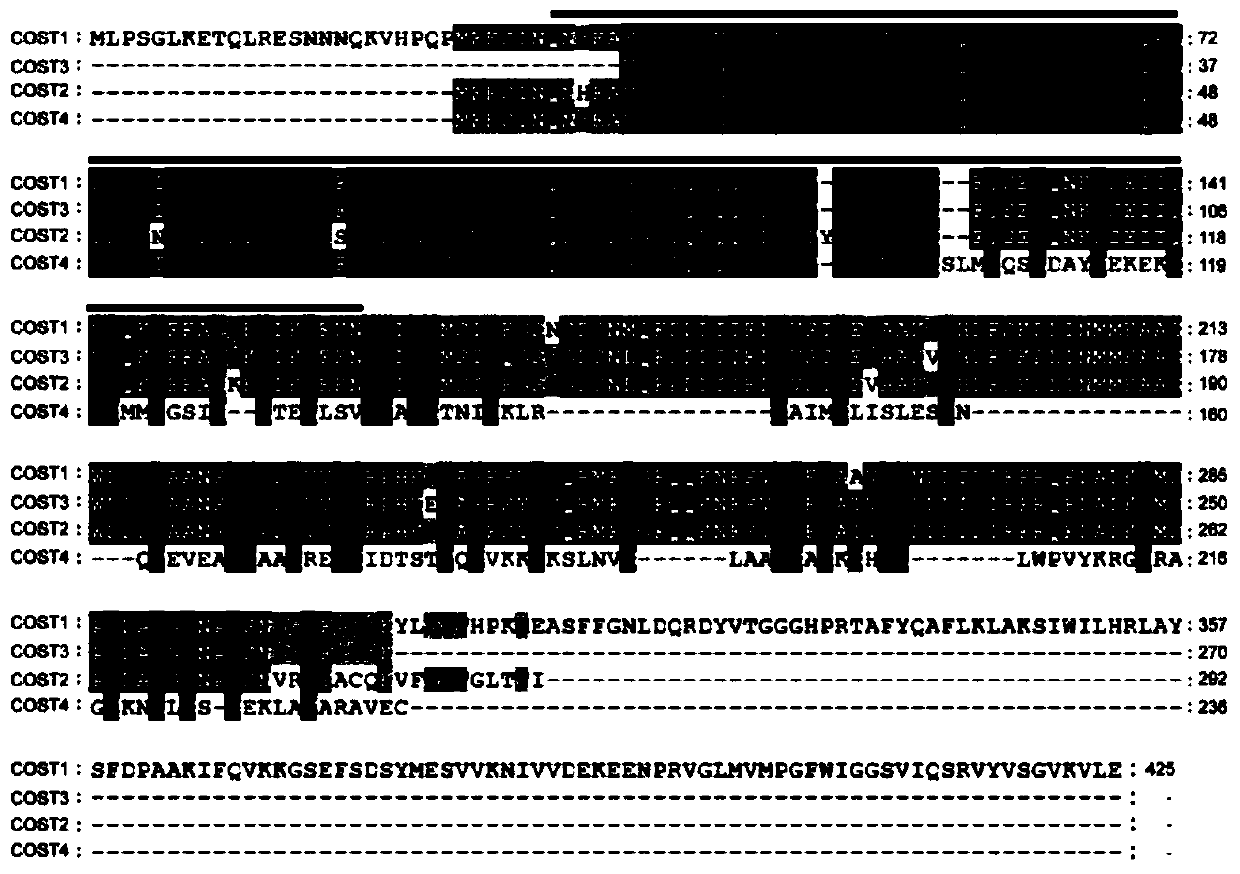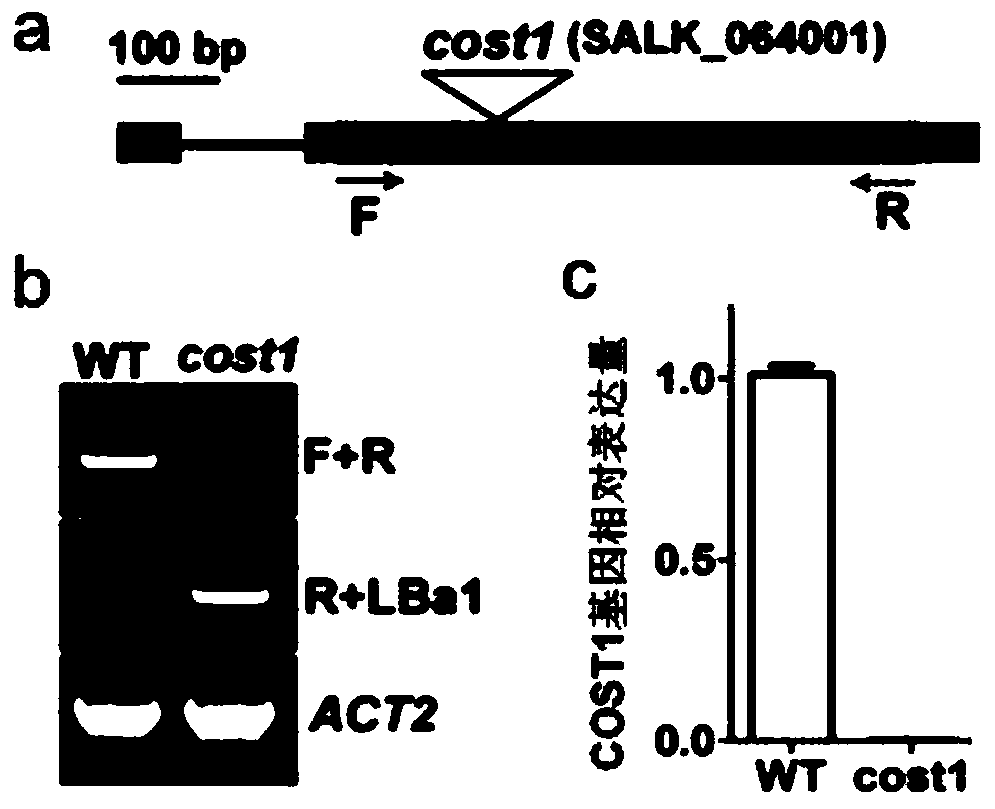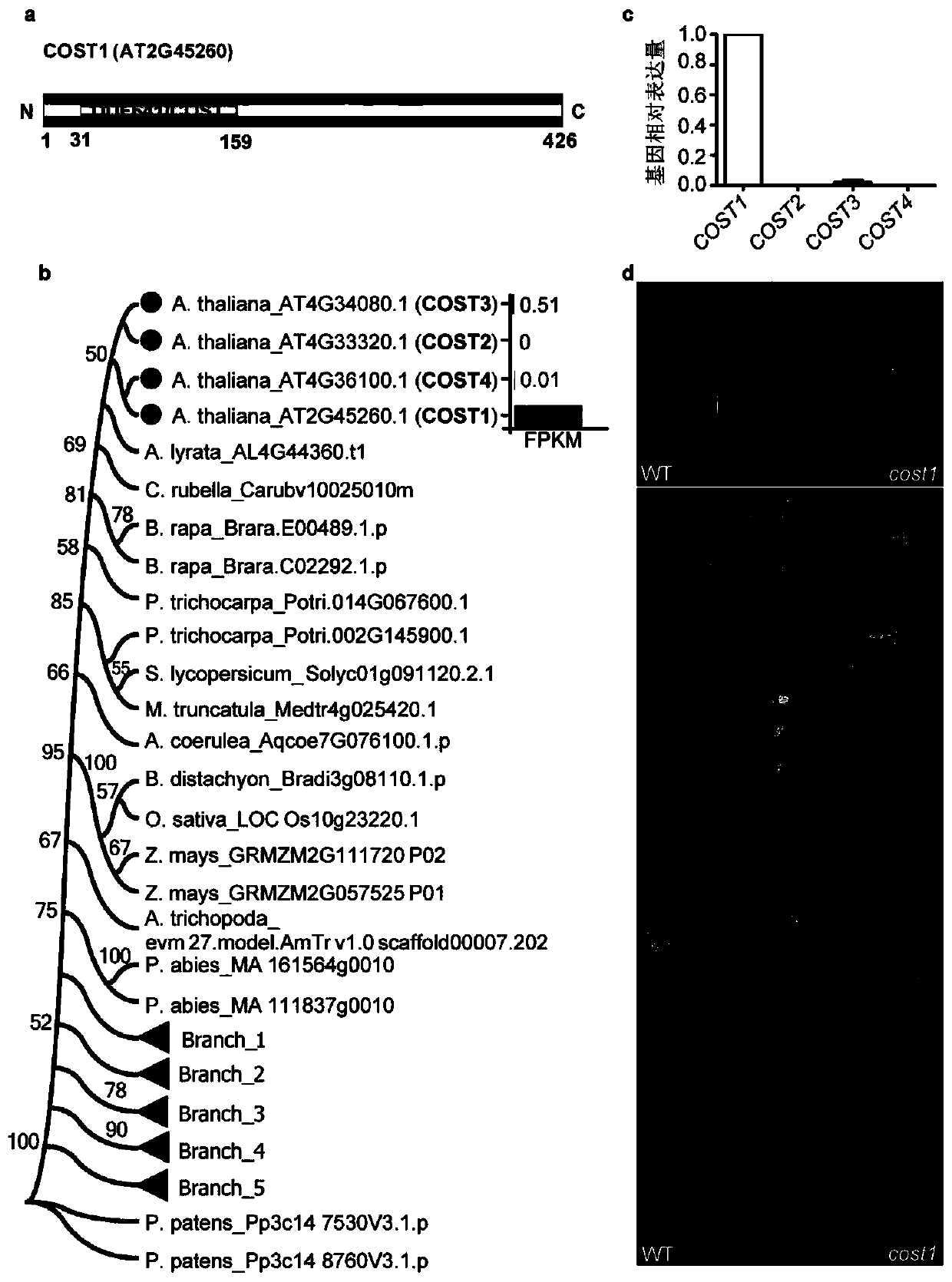Method for improving plant drought resistance by inhibiting expression of cost1 gene
A technology of transgenic plants and drought resistance, applied in the field of genetic engineering, can solve problems such as time-consuming and unclear genetic background, and achieve the effect of improving plant drought resistance
- Summary
- Abstract
- Description
- Claims
- Application Information
AI Technical Summary
Problems solved by technology
Method used
Image
Examples
Embodiment 1
[0039] 1. Screening and acquisition of COST1 gene
[0040]Through reverse genetics, a new Arabidopsis DUF641 family gene COST1 (Constitutively Stressed 1) was screened using transcriptome, genome and proteomics and other bioinformatics methods. After sequencing, its nucleotide sequence was as follows: The sequence is shown in SEQ ID NO.1, and its protein sequence is shown in SEQ ID NO.2; protein sequence alignment shows that in addition to COST1, there are three other proteins in Arabidopsis, COST2, COST3 and COST4, which are highly homologous to COST1 ( figure 1 ).
[0041] 2. Homology analysis of COST1 gene and verification of COST1 function
[0042] The T-DNA insertion plant SALK_064001 of COST1 was ordered from the ABRC (Arabidopsis Biological Research Center, www.arabidopsis.org) Arabidopsis mutant library. The insertion position of the T-DNA of this mutant is inside the first and only exon and is homozygous ( figure 2 a, b). The planting and mutant identification m...
PUM
 Login to View More
Login to View More Abstract
Description
Claims
Application Information
 Login to View More
Login to View More - R&D Engineer
- R&D Manager
- IP Professional
- Industry Leading Data Capabilities
- Powerful AI technology
- Patent DNA Extraction
Browse by: Latest US Patents, China's latest patents, Technical Efficacy Thesaurus, Application Domain, Technology Topic, Popular Technical Reports.
© 2024 PatSnap. All rights reserved.Legal|Privacy policy|Modern Slavery Act Transparency Statement|Sitemap|About US| Contact US: help@patsnap.com










